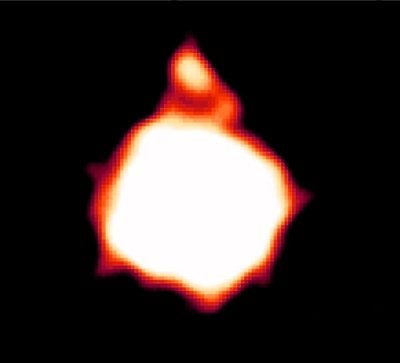Astronomers working to locate Earth’s nearest stellar neighbors have uncovered the closest known brown dwarf. Cataloged as DEN 0255–4700, the object lies 16.2 light-years away in Eridanus and is 100 million times fainter than the Sun. A new study finds it’s the dimmest object for which astronomers have measured an intrinsic visual brightness.
Astronomers took note of DEN 0255–4700, classified as an L-type dwarf, in 1999. Now, Edgardo Costa and Rene Mendez of the University of Chile in Santiago have determined the object’s distance and brightness. The new data rank DEN 0255–4700 as the 48th nearest star or substellar object — one-third closer than any other known L-type dwarf. The study will appear in the September 2006 issue of The Astronomical Journal.
Astronomers say DEN 0255–4700 has a surface temperature of just 2,600° F (1,427° C). The dwarf’s L7.5-type spectrum reveals an outer atmosphere containing superheated water mixed with unusual elements like potassium, rubidium, and cesium.
Costa and colleagues measured the dwarf’s distance by trigonometric parallax using the 1.5-meter telescope at the National Science Foundation’s Cerro Tololo Inter-American Observatory (CTIO) in the Chilean Andes. Nearby stars appear to make tiny ellipses in the sky as Earth orbits the Sun. Over a period of 3 years, the team imaged DEN 0255–4700 and monitored its wobbling. The large size of the dwarf’s ellipse demonstrates its proximity.
Astronomers believe plenty of “overlooked” objects reside near the Sun. They expect most are very low-mass stars with spectral type M — so-called red dwarfs — as well as T- and L-type bodies. These objects, like DEN 0255–4700, are probably brown dwarfs with too little mass to start long-term thermonuclear reactions. Such objects shine feebly, glowing only from the gravitational energy released as they formed billions of years ago.










